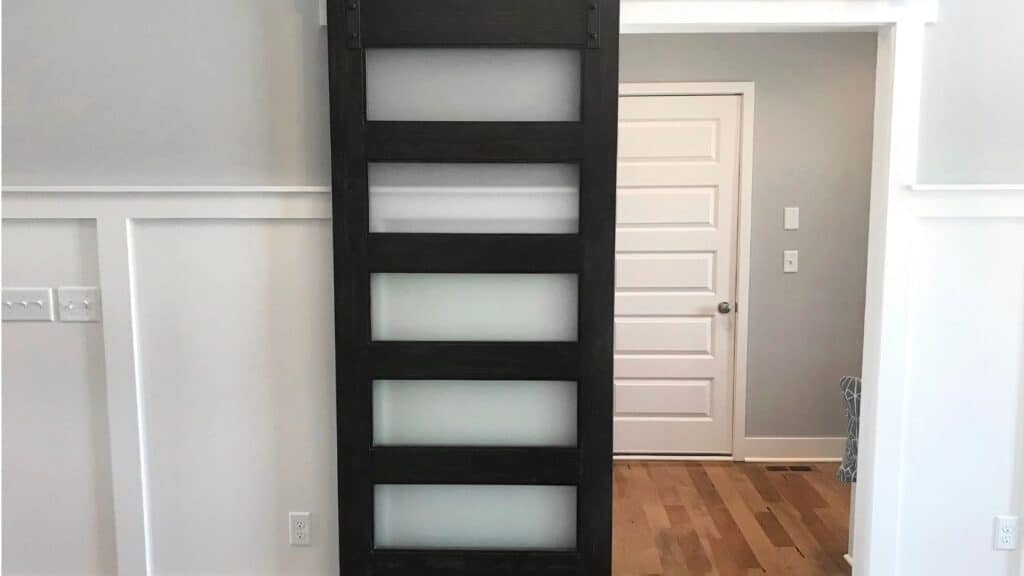If you can’t decide whether you should get sliding doors or not, read on to learn about the kinds of sliding doors, and their pros, and cons.
Doors are the gateway to the house, just like eyes are gateways to your soul. The right doors can make a statement. Doors are a significant part of any house and apart from their appearance, the location of the door is also important. Changing the location of the doors can also end up transforming the outlook of your house.
Are sliding doors better than normal doors?
Sliding doors are an amazing alternative to conventional doors. They are very trendy and come in a lot of designs. Moreover, in today’s era where property prices are soaring high, people can only afford to rent or buy small spaces. Such doors have a small area of influence and do not compromise the space indoors. With minimalist designs on the rise, sliding doors are gaining popularity.
Sliding Doors Explained
Enlisted below are the different kinds of sliding doors that you could choose from depending on various characteristics:
1. Number Of Sections Or Leaves
While selecting a sliding door the first thing to consider is the way that it will open or close. This is largely dependent on the space available and the position where the door is to be located. There are various kinds of sliding doors based on this factor:
Single–Leaf
This is the simplest of designs. The leaf covers the door opening and when it is opened, the leaf is pushed to the side on its track. This is used in interior decorations, especially in bathrooms or bedrooms.
Facing Sliding Door
This door consists of movable panels on the same tracks. Each of the leaves opens in a single direction. When the doors are completely open, the opening is huge enough to allow continuity between rooms. This kind of door can be used to separate two rooms like a sitting room or a dining room and when needed the two rooms can be linked by opening the sliding doors.
Parallel Sliding Doors
Here the leaves are placed in parallel, one on top of the other. So, this means that if you open the door there will always be one section that is closed. These doors are mostly used inside wardrobes and dressing areas.
Telescopic Sliding Doors
They usually stretch from the bottom to the top. They can comprise more than two leaves also. The leaves tend to open in the same direction in the form of a chain. The track is thicker to allow the movement of all the leaves in the same direction.
Sliding Doors With A Fixed Leaf
Such a sliding door has two parts, one of the parts is immovable and basically doubles as a wall, while the other is the door that slides open. Such doors are used when we need to let a lot of light indoors. They are mostly used for patio doors or shower areas.
Corner Sliding Doors
Placed in the corner of the room, they look incredibly trendy. The leaves when closed are perpendicular to each other. They are very common in offices, where we need to section and partition spaces in the least obstructive manner.
Folding Sliding Doors
As the name suggests, such doors tend to fold and slide. They are mostly used in living areas that open onto terraces.
Stackable Sliding Doors
The leaves are glued together. When they are closed, they resemble a shutter.
2. Sliding Door Material Types

There are mostly three different kinds of materials used for manufacturing sliding doors:
Glass
This is used in places where we need to allow a lot of light to enter. For example, in the kitchen, bathroom, or office. The glass used in sliding doors is tempered. Tempered glass is tougher than normal glass and is not as susceptible to damage on impact as the other kinds of glass.
Wood
These doors are robust and used for areas that require privacy. For example, in the bedroom or bathroom. Such doors also do not let noise leak out or travel in.
Metal
This material is not as widely used as the other two. They are extremely strong and durable. They are mostly used to seal warehouse or storage doors. You can also opt for a sliding metal door.
3. Placement Of The Sliding Doors
There are two types of sliding doors:
Embedded Doors
All the components of the doors like the rails or other ancillary parts that allow the doors to move are completely hidden. A heavy investment is required to place such doors because you need to remove a huge chunk of the wall, insert the door and then patch up the wall again.
Exterior Sliding Doors
Visible, through the installation of metal hinges. These fittings, in turn, can be uncovered or covered with boards of another material.
Advantages And Disadvantages Of Sliding Doors
Advantages Of Sliding Doors
- They offer greater insulation than conventional doors. This means that less electricity is used to heat or cool a place. Due to their ability to insulate properly, the HVAC systems used for heating or cooling only need to run for short periods of time.
- Sliding doors vs Hinged doors: Sliding door takes up less space when moving. A hinged door needs space where the movement is undisturbed, while a sliding door does not require extra space. They are used in small rooms where space is a concern.
- They look very trendy and by simply installing them we can change the appearance of the rooms completely. Since they are available in a lot of designs and styles, you can choose one that can completely transform the appearance of your home or room.
Disadvantages Of Sliding Doors
- As opposed to conventional wooden doors, they are easier to break into sometimes. This is why people mostly prefer to install them indoors.
- High bleating winds, snowstorms, and extreme hailstorms can prove to be dangerous for such kinds of doors.
- Sliding doors require a lot of maintenance and cleaning. To look pristine at all times, be prepared to give them a thorough cleaning at regular intervals. Moreover, the rollers that they slide on, only have a life of a few years. This means that sliding door repairs may be required regularly for the doors to slide properly.
